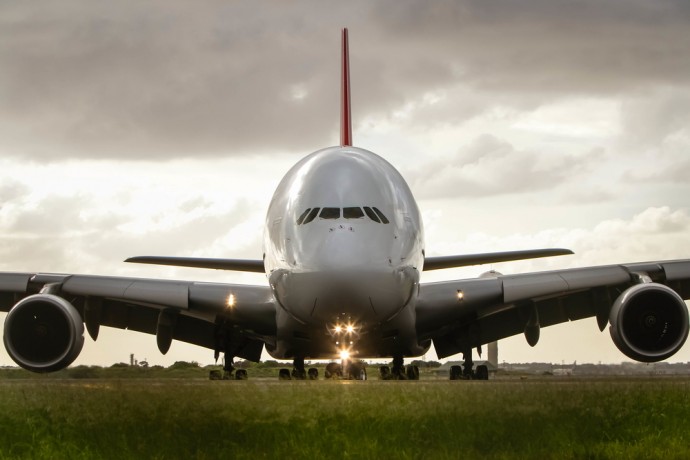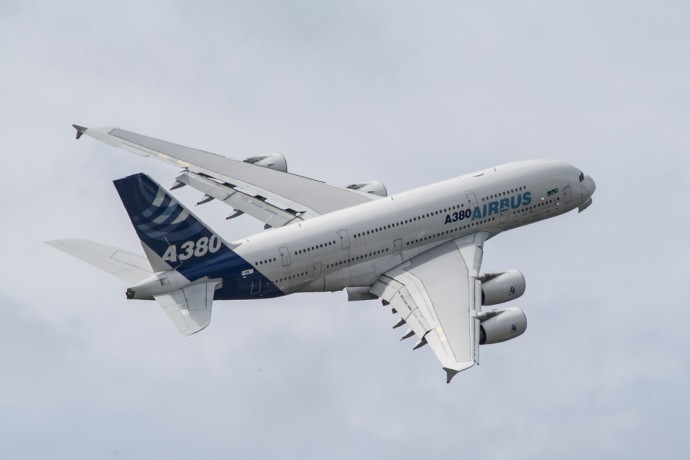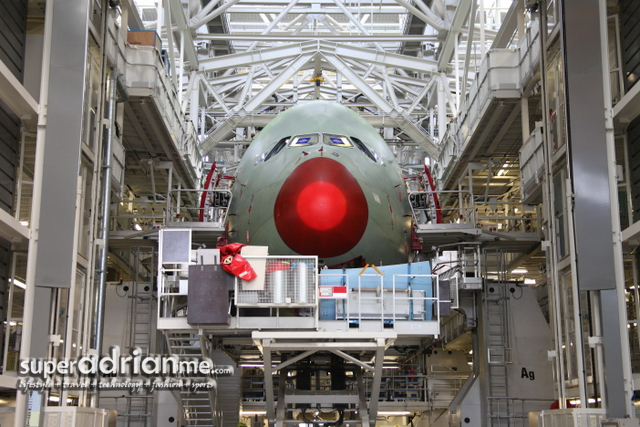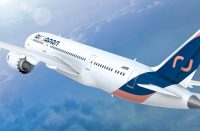
Earlier this year, I had the opportune of a lifetime as an aviation geek to visit the home of where Airbus’s A380 aircraft are assembled in Toulouse, France. It was part of a tour which AirAsia X arranged before collecting their tenth Airbus A330 aircraft. With a nice cool weather in the small town of Toulouse, where people are friendly and the pace of life was calming, Airbus assembles the A380s in a huge hangar separate from the assembly line of the other Airbus commercial aircraft models.
Qatar Airways will be the next airline to fly the Airbus A380 making its maiden flight ahead of an early 2014 debut on its flights to London and Paris. Qatar Airways’ A380 fleet will carry eight suites in First Class, 52 Business Class seats (similar to its existing Boeing 787 fleet), a lounge and a small economy cabin on the upper deck. The lower deck will carry only economy class passengers. Qatar has 10 A380s on order joining British Airways and China Southern with both the Dreamliner and A380.
On 13 September 2013, Air France took delivery of its ninth Airbus A380 with a capacity of 516 in 4 cabin classes. It has nine seats in La Première, 80 seats in Business, 38 seats in Premium Economy and 389 seats in Economy. Air France will take delivery of its tenth aircraft in 2014.

Fun Facts about the Airbus A380
(as at end August 2013)
- 108 A380s have been delivered to nine operators (10 to Lufthansa, 8 to Air France, 36 to Emirates, 12 to Qantas, 19 to Singapore Airlines, 7 to Korean Air, 5 to China Southern Airlines, 6 to Malaysia Airlines, 4 to Thai Airways and 1 to British Airways).
- Total firm orders for the A380 stand at 262 aircraft from 20 customers.
- Some 150 flights are performed each day by the A380 over the world, and 1.5 million passengers fly on the A380 each month.
- The A380 first entered into commercial service with Singapore Airlines in October 2007
- The world fleet has accumulated 1 million revenue flight hours in 122,000 commercial flights and more than 44 million passengers have already flown on the aircraft
- An A380 takes off or lands in the world every 6 minutes.
- The A380 Family starts from a baseline passenger aircraft with a capacity of 525 passengers in three classes, and a range of 15,300 km / 8,300 nm (more than 1,000nm than the 747, 500nm more than the 747-8)
- The A380 is already airport proven with 150 small and large airports visited to date. The A380 uses existing ground handling equipment yet ensures a short turnaround time
- The total cabin surface area of the A380 is 550 m2. Two separate, full-length widebody cabins: Main Deck (MD) cabin, the widest of any airliner, is 20” (51cm) wider and Upper Deck (UD) cabin, the first full widebody UD cabin ever, is 71” (180cm) wider than 747 cabin: 50% more useable floor area with 40% more passengers
- The quietest cabin in the sky – lowest cabin noise of any existing passenger aircraft. The A380 cabin is about 5dBSIL3* quieter than the 747 cabin
- Larger stowage bins – 15% more bin volume per passenger in economy class
- The A380 offers unmatched fuel efficiency, thus reducing the CO2 footprint of each passenger
- The fuel consumption of the A380 is less than 3 litres per pax per 100km in a typical 3 class configuration (525 seats)
- Fuel burn per seat: the 747-400 has 20% higher Fuel Burn/seat than A380
- A380 is the largest civil aircraft (max seating capacity of 853 vs 660 in 747) in history
- The A380 was launched in December 2000, 34 years after the Boeing 747 (1966).
- An A380 comprises 500 kilometres of electric cables.
- Each A380 consists of around 4 million individual components with 2.5 million part numbers produced by 1,500 companies from 30 countries around the world.
- It takes 13,000 rivets to join the 3 sections of the fuselage. 4,000 rivets are used for the junction of the wings and the fuselage.
- The volume of the three decks (including cargo/baggage hold) is 1,570 cubic meters, enough space for 35 million ping-pong balls.
- The total area of the A380’s two passenger decks is 550 sq. meters, the same as three tennis courts (singles), or 1 ¼ basketball courts (usable floor area is 50% higher than in the 747).
- One wing (empty, without fuel), weighs 40 tonnes.
- During take-off the wing will flex upwards by over 4 meters.
- The wing span is 79.8m and the wings are swept at an angle of 33.5 degrees.
- 5,000 light scenarios on board, using a wide choice of fluorescent and LED technology.
- The weight of the external paint of the A380 (topcoat plus primer) is equal to 531 kg – the weight of a horse
- A380 is the largest civil aircraft (max seating capacity of 853 vs 660 in 747) in history
- The A380 was launched in December 2000, 34 years after the Boeing 747 (1966).
- The A380 wing area is 845 sq. meters, 54% more than the B747-400. This enables the A380 to land 20 knots i.e. 35km/h slower than a 747 at its maximum landing weight of 386 tonnes, and helps to reduce noise around airports.
- The air conditioning features the most advanced filters in the industry, allows 15 different temperature control zones and contributes to the cabin noise reduction by low-speed air exchange. In addition, the air in the cabin (1,570 cubic meters) is changed every 3 minutes. The temperature can vary between 18 and 30 degrees.
- An A380 has 5 landing gears and 22 wheels.
- The maximum design load on the 6-wheel body gear is 260 tonnes – equivalent to 200 VW Golfs or Peugeot 206s.
A380 specifications
Dimensions Basic operating data
|
Overall length |
73 m |
|
Engines |
Rolls-Rolce Trent 900 or Engine Alliance GP 7200 |
|
Height |
24.1 m |
|
Engine thrust range |
311 kN |
|
Fuselage diameter |
7.14 m |
|
Typical passenger seating |
525 |
|
Maximum cabin width |
Main deck: 6.58 m Upper deck: 5.92 m |
|
Range (w/max. passengers) |
15.300 km |
|
Cabin length |
49.90 m |
|
Long Range Cruise |
M 0.85 |
|
Wingspan (geometric) |
79.8 m |
|
Bulk hold volume |
14.3 cu. m |
|
Wing area (reference) |
845 sq.m |
|
Design Weights |
|
|
Wing sweep (25% chord) |
33.5 degrees |
|
Maximum take-off weight |
560 tonnes |
|
Wheel diameter |
1.1 m |
|
Maximum landing weight |
386 tonnes |
|
Wheelbase |
30.4 m |
|
Maximum zero fuel weight |
361 tonnes |
|
Wheel track |
14.3 m |
|
Maximum fuel capacity |
310.000 litres |























Pingback: Book Your Emirates Flights for the Year-End Vacation at special rates | SUPERADRIANME.com
Pingback: Singapore Airlines Looks Forward to Seeing You In the Air Again with New Brand Campaign » SUPERADRIANME.com
Pingback: AirAsia X Collects its 10th Airbus Aircraft | SUPERADRIANME
Pingback: Air France Introduces Eco-Designed Tableware | SUPERADRIANME